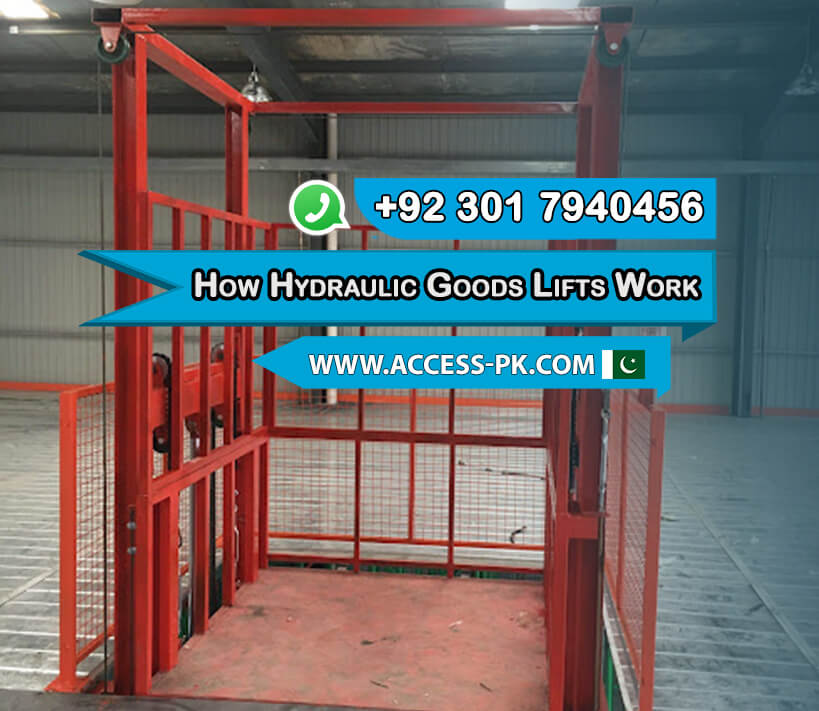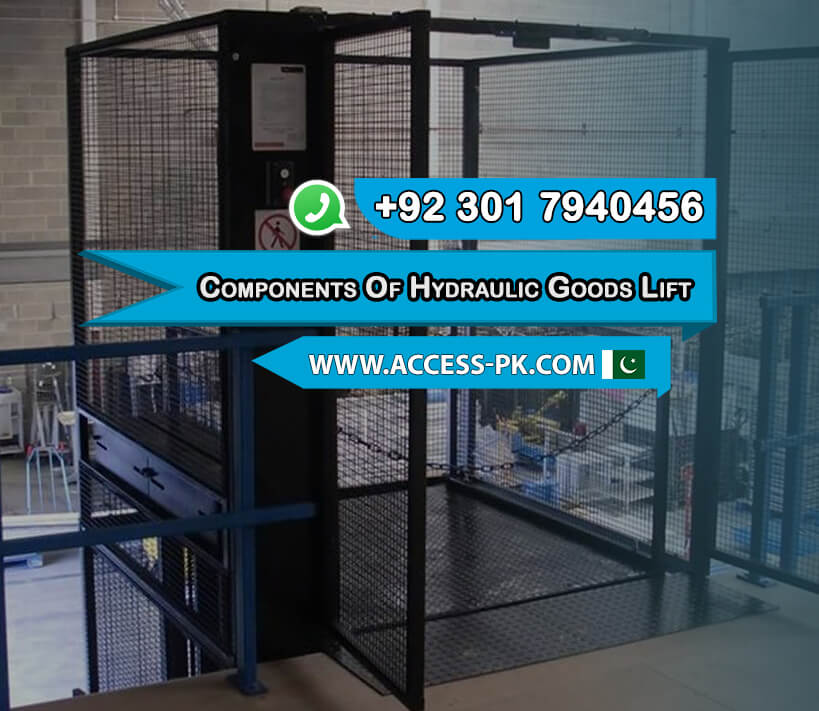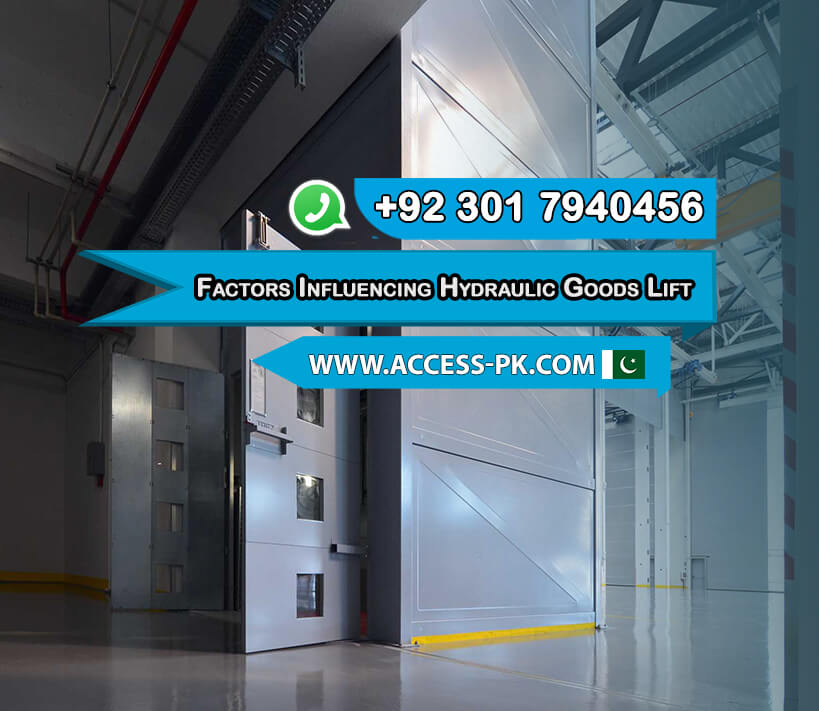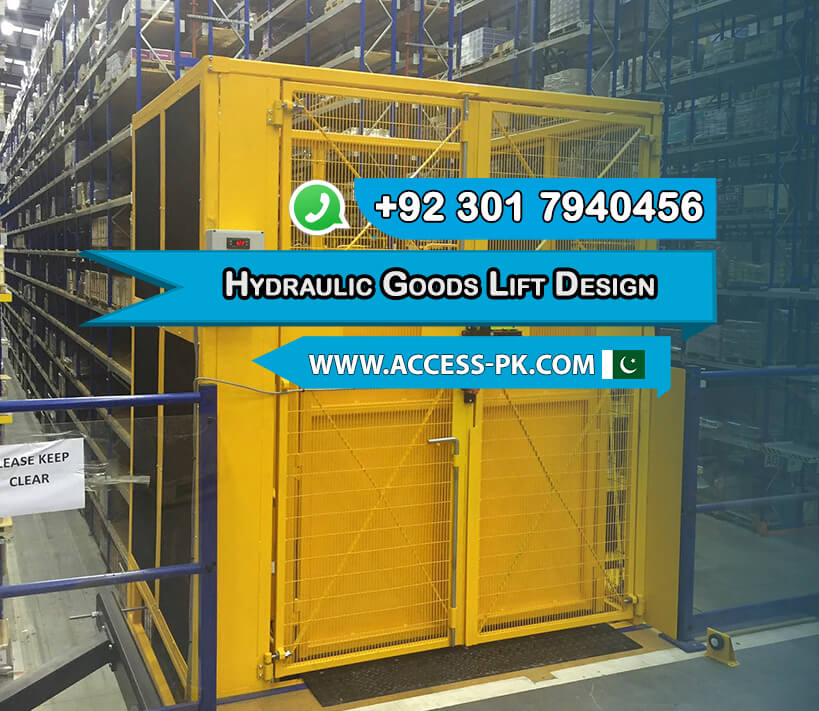Access Technologies, owned by Imran Rafi, is renowned for its expertise in hydraulic goods lift design. These lifts are indispensable in various industries for efficient material handling. With their robust construction and reliable operation, hydraulic goods lifts have become essential equipment for transporting heavy loads within warehouses and industrial facilities. Despite their importance, it’s crucial to explore the intricacies of their design to ensure optimal performance. One key aspect of hydraulic goods lift design is understanding the mechanics behind their operation. These lifts utilize hydraulic systems to move loads vertically, offering a cost-effective and efficient solution for transporting goods. By harnessing the power of hydraulic fluid under pressure, these lifts can lift heavy loads with ease.
Understanding this mechanism is vital for designing hydraulic goods lifts that meet the specific requirements of different applications. When considering hydraulic goods lift design, it’s essential to focus on the key components that make up these systems. Components such as hydraulic cylinders, pumps, valves, and reservoirs work together to facilitate smooth and controlled movement. Attention to detail in the design of these components ensures the reliability and durability of the lift, ultimately impacting cargo lift prices. By optimizing these components, manufacturers can offer lifts that meet performance expectations while remaining cost-effective.
Safety is paramount in hydraulic goods lift design. These lifts often operate in environments where the safety of personnel and cargo is paramount. Incorporating safety features such as emergency stop buttons, overload protection, and safety gates ensures the protection of both operators and goods. Additionally, regular maintenance and inspections are essential to prevent accidents and ensure the longevity of hydraulic goods lifts. With a focus on safety, Access Technologies delivers hydraulic goods lifts that prioritize the well-being of users while providing efficient material handling solutions.
Get Quotes Now : 03017940456Understanding the Mechanics: How Hydraulic Goods Lifts Work

Hydraulic goods lifts are essential equipment in various industries, facilitating the movement of heavy loads vertically. These lifts operate on the principle of hydraulic pressure to elevate goods efficiently and safely. The mechanics behind hydraulic goods lifts involve a straightforward yet robust process. To begin with, hydraulic goods lifts consist of a platform or cage supported by a hydraulic system. This system comprises a pump, fluid reservoir, and hydraulic cylinder. When activated, the pump pressurizes hydraulic fluid, typically oil, which is then transmitted to the cylinder. As a result, the cylinder extends, raising the platform along with the load. This mechanism enables smooth and controlled lifting of heavy cargo, ensuring stability throughout the process. Despite the advanced technology involved, hydraulic goods lifts remain cost-effective, with cargo lift prices varying based on factors such as load capacity and lift height.
Introduction to Hydraulic Goods Lifts
Hydraulic Goods Lifts, also known as hydraulic freight elevators, are essential in warehouses, factories, and industrial settings for efficient movement of heavy loads. Unlike traditional lifts, which operate on electric motors and cables, hydraulic lifts utilize fluid mechanics to lift and lower goods. Understanding the mechanics behind hydraulic goods lifts offers insight into their reliability, safety, and cost-effectiveness compared to other lifting solutions.
Mechanics of Hydraulic Goods Lifts
The operation of hydraulic goods lifts involves a straightforward yet ingenious mechanism. A hydraulic system consists of a hydraulic cylinder, a pump, and a reservoir of hydraulic fluid. When a load is placed on the lift platform and the lift is activated, the pump forces hydraulic fluid into the cylinder, causing the piston inside to move upward. This upward motion lifts the platform, allowing it to carry the goods to the desired height. The amount of force exerted by the hydraulic fluid determines the lifting capacity of the lift. Despite their power, hydraulic goods lifts are remarkably quiet and smooth in operation, enhancing workplace efficiency and safety.
Advantages of Hydraulic Goods Lifts
The use of hydraulic goods lifts offers several advantages over alternative lifting solutions. Firstly, hydraulic lifts are highly reliable, with fewer moving parts compared to electric lifts, reducing the likelihood of mechanical failures. Additionally, hydraulic lifts are energy-efficient, as they only require power when lifting or lowering goods, unlike continuous power consumption in electric lifts. Moreover, hydraulic goods lifts are cost-effective, with cargo lift prices typically lower than those of electric lifts, making them a preferred choice for businesses aiming to optimize their logistics operations without breaking the bank. Overall, the simplicity and effectiveness of hydraulic goods lifts make them indispensable tools for modern industrial settings.
Get Quotes Now : 03017940456Key Components of Hydraulic Goods Lift Design

The hydraulic system forms the core of a Hydraulic Goods Lift, comprising a hydraulic cylinder, pump, and fluid reservoir. Upon activation, the pump pressurizes hydraulic fluid, which is then directed into the cylinder, exerting force on the piston to lift the goods platform. This system’s simplicity and reliability make it a preferred choice in industrial settings. Additionally, hydraulic goods lifts typically boast more affordable cargo lift prices compared to other lift mechanisms, enhancing their cost-effectiveness for businesses. A critical component of Hydraulic Goods Lifts is the lift platform, designed to support heavy loads while maintaining stability and safety during operation. Constructed from sturdy materials like steel, lift platforms distribute weight evenly to prevent imbalance. Despite their robust build, these platforms move smoothly and quietly, ensuring efficient material handling in busy industrial environments.
| Elevator Type | Cost |
|---|---|
| Stair lifts | 810000 to 1770000/Pkr |
| Home Lifts | 1200000 to 2000000/Pkr |
| DIY Food Elevator | 2230000 to 3350000/Pkr |
| Two-Story Home Lift | 7020000 to 8420000/Pkr |
| Hospital Bed Elevators | 4150000 to 8300000/Pkr |
| Panoramic Elevator | 3180000 to 3870000/Pkr |
Control panels are integral to Hydraulic Goods Lifts, allowing operators to manage lift operations safely and conveniently. These panels feature buttons or switches for lift activation, height adjustment, and emergency stops. Advanced models may include digital displays for load monitoring and safety sensors to prevent accidents. While such features may increase initial cargo lift prices, investing in advanced safety measures can lead to long-term cost savings by minimizing accidents and goods damage. Safety features play a crucial role in Hydraulic Goods Lift design, ensuring the protection of both goods and personnel. These features may include overload protection, emergency stop buttons, and safety railings. By prioritizing safety in lift design, businesses can mitigate risks and uphold workplace safety standards, ultimately enhancing productivity and reducing long-term costs associated with accidents and injuries.
Get Quotes Now : 03017940456Hydraulic Goods Lift by Access Technologies

Hydraulic Goods Lifts by Access Technologies feature cutting-edge hydraulic systems that ensure smooth and seamless lifting of heavy loads. These hydraulic systems comprise high-quality components, including hydraulic cylinders, pumps, and fluid reservoirs, meticulously designed to withstand rigorous industrial environments. With a focus on durability and performance, Access Technologies’ Hydraulic Goods Lifts offer exceptional value for businesses seeking cost-effective solutions. Moreover, their competitive cargo lift prices make them an attractive option for companies looking to optimize their logistics operations without compromising on quality. The lift platforms in Access Technologies’ Hydraulic Goods Lifts are engineered to accommodate various load sizes and weights with ease. Constructed from robust materials such as steel, these platforms ensure stability and safety during material transportation.
Whether handling large machinery or smaller parcels, the lift platforms provide reliable support, contributing to efficient workflow management in warehouses and factories. Additionally, the smooth and quiet operation of the lift platforms enhances workplace productivity, minimizing disruptions in busy industrial settings. Control panels play a vital role in facilitating user-friendly operation of Access Technologies‘ Hydraulic Goods Lifts. Equipped with intuitive controls, these panels allow operators to manage lift functions effortlessly. Operators can activate the lift, adjust its height, and stop it in emergencies with the touch of a button. Furthermore, advanced features such as digital displays for load monitoring and safety sensors for accident prevention enhance operational efficiency and safety. Despite the inclusion of such advanced features, Access Technologies remains committed to offering competitive cargo lift prices, ensuring accessibility to businesses of all sizes.
Get Quotes Now : 03017940456Factors Influencing Hydraulic Goods Lift Efficiency

The design and quality of the hydraulic system significantly influence Hydraulic Goods Lift efficiency. High-quality components, such as hydraulic cylinders and pumps, ensure smooth operation and reliable lifting of heavy loads. Additionally, well-engineered fluid reservoirs help maintain optimal hydraulic fluid levels, preventing potential issues like air bubbles or fluid leakage. Investing in top-tier hydraulic systems may initially incur higher cargo lift prices, but the long-term benefits in terms of performance and durability outweigh the initial investment. Another factor affecting Hydraulic Goods Lift efficiency is the design and construction of the lift platform. A sturdy and well-built platform can withstand heavy loads without compromising stability or safety during operation.
Hydraulic System Design
The efficiency of Hydraulic Goods Lifts is heavily influenced by the design and quality of the hydraulic system. High-quality components, including hydraulic cylinders, pumps, and fluid reservoirs, ensure smooth operation and reliable lifting of heavy loads. Investing in top-tier hydraulic systems may initially incur higher cargo lift prices, but the long-term benefits in terms of performance and durability outweigh the initial investment.
Lift Platform Construction
The design and construction of the lift platform significantly impact Efficient control systems are essential for seamless operation and management of . Intuitive control panels equipped with advanced features enable operators to manage lift functions seamlessly, enhancing operational efficiency and contributing to a safer working environment. While incorporating advanced control systems may impact cargo lift prices, the benefits in terms of improved efficiency and safety justify the investment. Efficient control systems are essential for seamless operation and management of Hydraulic Goods Lifts. Intuitive control panels equipped with advanced features enable operators to manage lift functions seamlessly, enhancing operational efficiency and contributing to a safer working environment.
Control Systems Integration
Efficient control systems are essential for seamless operation and management of Hydraulic Goods Lifts. Intuitive control panels equipped with advanced features enable operators to manage lift functions seamlessly, enhancing operational efficiency and contributing to a safer working environment. While incorporating advanced control systems may impact cargo lift prices, the benefits in terms of improved efficiency and safety justify the investment.
Get Quotes Now : 03017940456